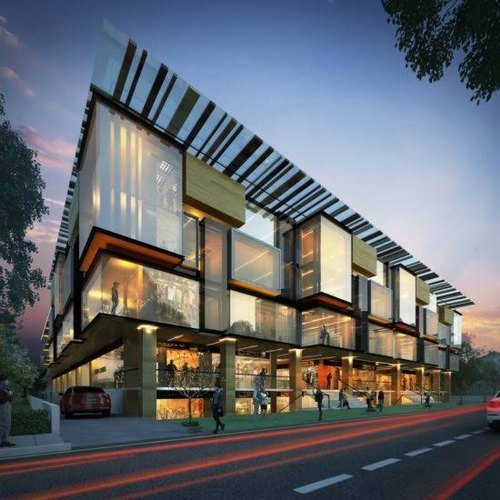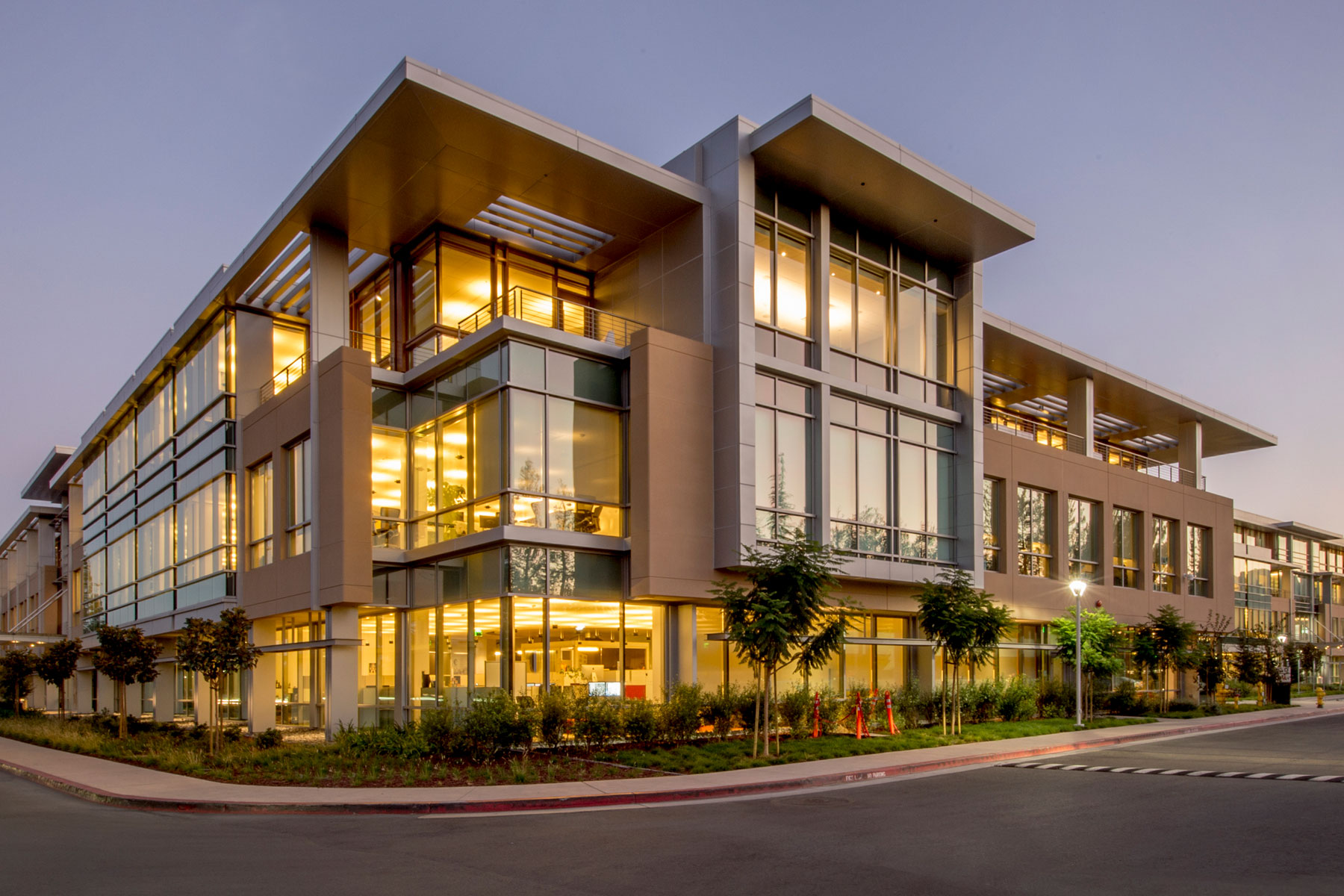Exactly How Commercial Architects Can Transform Your Service Space With Specialist Layout Solutions
Commercial architects play an essential duty in reshaping service environments. Their experience in layout can significantly boost both performance and looks. By creating rooms that show a brand's identification, they enhance operational efficiency and worker satisfaction. Nevertheless, the influence of their work prolongs past plain look. Recognizing the nuances of partnership and sustainability can bring about transformative results. What certain components make these improvements effective?
Understanding the Function of Commercial Architects
Commercial architects play an essential role fit service settings that are both functional and cosmetically pleasing. They specialize in developing rooms tailored to the specific needs of organizations, guaranteeing that every square foot is utilized properly. These experts incorporate components such as spatial layout, lights, and products to improve productivity and employee health. By collaborating with clients, commercial architects collect insights right into operational demands and brand identity, converting these right into innovative designs.Additionally, they navigate intricate building ordinance and zoning laws, making certain compliance while making the most of design potential. Their competence reaches sustainability techniques, promoting energy performance and ecologically pleasant materials in their projects. Through their innovative vision and technical understanding, commercial architects not just create attractive spaces but likewise foster settings that advertise collaboration and development. Ultimately, their payments substantially affect the total success and photo of a service.
Advantages of Specialist Style Services

Customizing Spaces to Your Brand Identity
Tailoring spaces to a brand name's identification is essential for conveying its core values and mission. Commercial architects play an essential function in enhancing a service's visual identification via thoughtful layout options. By lining up architectural aspects with brand name concepts, business can develop environments that reverberate with clients and staff members alike.
Showing Brand Worths
Just how can a properly designed area symbolize a company's core worths? Commercial architects play a crucial role in forming settings that resonate with a brand name's identification. By integrating aspects such as color pattern, products, and layouts, they develop spaces that mirror the essence of the company. As an example, a technology company could go with open formats and contemporary home furnishings to share development and collaboration, while a high-end brand name might select sophisticated surfaces and intimate spaces to stimulate exclusivity and sophistication. Thoughtful layout not only improves performance but additionally cultivates a strong connection between staff members, clients, and the brand name. Inevitably, a well-crafted setting serves as a substantial representation of a business's objective and vision, enhancing its worths at every touchpoint.
Enhancing Aesthetic Identity
What elements can effectively boost a brand name's visual identity within an industrial space? Commercial architects play a critical role in integrating layout attributes that reverberate with a firm's values. Color design, typography, and products can be purposefully picked to reflect brand name worths while making certain visual allure. In addition, including logo designs and brand name images into the design can develop a natural aesthetic story. Lights style can further boost the environment, guiding customer understandings and experiences (commercial architects). Design and furnishings choices need to straighten with the brand's character, whether it's modern, standard, or innovative. Inevitably, a well-designed business area not just draws in clients but additionally enhances brand recognition, developing a long lasting impression that cultivates commitment and engagement
Enhancing Performance and Effectiveness
Enhancing performance and performance in commercial rooms entails optimizing room use and making process that streamline operations. Architects concentrate on creating layouts that reduce lost space while assisting in smooth modifications between tasks. This method not just enhances efficiency but also adds to a more cohesive working atmosphere.
Maximizing Space Usage
Effective space application is an essential aspect in business architecture, where the design must stabilize aesthetics with capability (commercial architects). Architects utilize various strategies to maximize readily available square video footage while making certain that each location serves a distinctive function. By assessing process, traffic patterns, and customer demands, architects can produce formats that enhance both staff member performance and customer experience. Multi-functional rooms, flexible furnishings plans, and enhanced storage options are crucial components in accomplishing this goal. Furthermore, integrating all-natural light and open spaces promotes a more inviting ambience, additional raising the utility of the setting. Eventually, effective area usage not only boosts operational efficiency yet likewise adds favorably to the general brand image, making read this it a vital factor to consider in commercial navigate to this website design
Streamlined Process Layout
Just how can a well-designed operations transform a business room into a center of efficiency? Structured operations design focuses on maximizing the physical format and functional processes within a business environment. By tactically setting up workstations, conference locations, and resources, architects can get rid of unneeded motion and enhance cooperation. This thoughtful layout decreases disturbances and facilitates communication, permitting workers to concentrate on their tasks much more successfully. Additionally, integrating technology into the workflow can additionally automate procedures, reducing time spent on routine jobs. Because of this, organizations experience enhanced employee morale and boosted outcome, creating a dynamic atmosphere that fosters advancement. Inevitably, spending in streamlined workflow style not just improves functionality however also positions an industrial space for sustainable development and success.
Fostering Collaboration With Style
Modern-day workspaces commonly prioritize private performance, the design of industrial rooms significantly highlights partnership as a vital chauffeur of technology and group cohesion. Architects play a crucial duty in creating atmospheres that cultivate interaction among staff members. Open formats, multifunctional spaces, and purposefully placed common locations urge spontaneous discussions and conceptualizing sessions.Incorporating aspects such as movable furnishings and versatile conference room enables groups to reconfigure rooms based on their collective requirements. Furthermore, integrating modern technology, like interactive whiteboards and video conferencing devices, boosts the capability to connect efficiently, despite location.Natural light and biophilic design components also add to an extra welcoming ambience, promoting convenience and health, which are essential for effective synergy. By concentrating on these facets, industrial architects can produce vibrant atmospheres that not just enhance collaboration yet likewise drive total service success.
Lasting Style Practices in Commercial Style

Situation Studies: Effective Makeovers by Commercial Architects
The application of sustainable design methods has not only reshaped the strategy to industrial design but has actually likewise caused impressive changes in various organization spaces. One significant case is the redesign of a technology firm's headquarters, where architects integrated all-natural light and green walls, causing improved staff member well-being and performance. This transformation reduced energy costs by 30% and boosted the firm's public image.In another instance, a retail store undertook a full overhaul, using redeemed products and energy-efficient systems. This not just drew in eco-conscious customers however additionally increased foot web traffic by 25%. A 3rd case entailed a corporate workplace that welcomed an open-plan design with versatile work areas, cultivating collaboration amongst teams. The architects' concentrate on creating a dynamic and versatile setting substantially increased worker fulfillment. These case studies exemplify exactly how business architects can develop impactful rooms that align with company goals and sustainability efforts.
Frequently Asked Concerns
Exactly How Much Do Commercial Design Provider Generally Expense?
The expense of commercial architecture services varies commonly, usually varying from $100 to $250 per hour. Aspects affecting prices consist of job complexity, area, and the engineer's experience, making it important for services to acquire comprehensive estimates.
What Sorts Of Companies Benefit Most From Commercial Architects?
Various businesses, including retail, friendliness, and company offices, considerably take advantage of commercial architects. These professionals boost functionality, aesthetics, and brand identification, making sure spaces are optimized for consumer interaction and employee performance, eventually fostering organization development.
For how long Does a Business Style Project Typically Take?
The timeline for an industrial design project generally ranges from a number of weeks to numerous months. Variables affecting period consist of project intricacy, governing authorizations, and cooperation amongst stakeholders, all of which can affect overall conclusion time.
Can I Hire a Business Architect for Remodellings Only?
Yes, working with a business designer for remodellings is viable. Several architects specialize in improvement tasks, providing use this link knowledge in optimizing existing rooms while adhering to regulations and improving performance, visual appeals, and overall value of the company atmosphere.
What Credentials Should I Try to find in a Business Designer?
